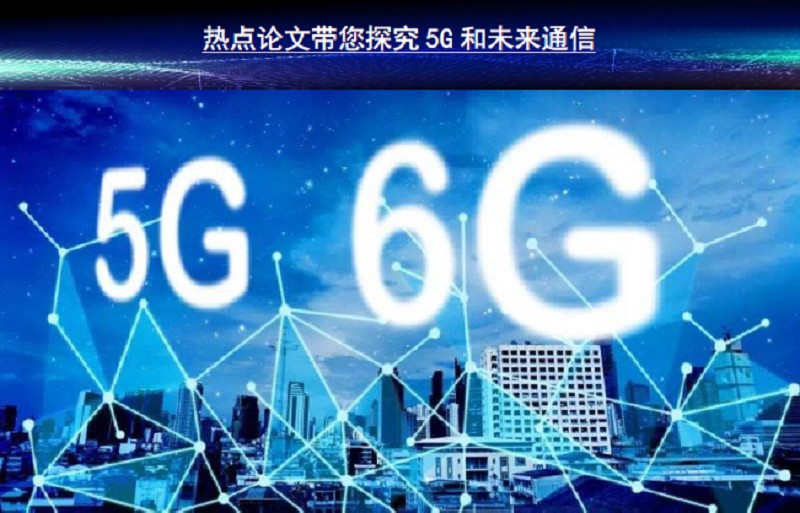热点论文带您探究5G和未来通信——图书馆前沿文献专题推荐服务(4)
发布时间:2020-03-29

在上一期中,我们介绍了5G面向的应用领域,以及支撑5G的各项关键技术及其发展情况。众所周知,5G的发展对于我国的科技产业升级,以及国计民生领域的发展有着重要的意义和推动作用。同时,5G网络带来的便利性也引入了一系列不可忽视的问题,诸如海量数据的分流和本地化卸载需求,政府、企业、个人业务的云化趋势,引发了对MEC(Mobile Edge Computing)技术的落地形式,以及网络安全性技术等多方面研究热潮。在此,我们参考了国际学术的前沿期刊,推荐一些相关方向的研究成果,以期共同推动5G乃至未来通信技术的进一步发展。
本期我们为您推送4篇文章,从不同的角度解读5G的发展以及对6G的展望!

Is 5 just what comes after 4?
Muriel Médard
Nature Electronics,2020,(3):2–4
The fifth generation of mobile phone technology — 5G — promises higher data rates and more reliable communication than previous generations, leading to a variety of novel applications. But to make this a reality, developments in a range of technologies will be required.

Wireless Edge Computing With Latency and Reliability Guarantees
Mohammed S. Elbamby, etc
Proceedings of the IEEE,2019,107(8)1717 - 1737 .
Edge computing is an emerging concept based on distributed computing, storage, and control services closer to end network nodes. Edge computing lies at the heart of the fifth-generation (5G) wireless systems and beyond. While the current state-of-the-art networks communicate, compute, and process data in a centralized manner (at the cloud), for latency and compute-centric applications, both radio access and computational resources must be brought closer to the edge, harnessing the availability of computing and storage-enabled small cell base stations in proximity to the end devices. Furthermore, the network infrastructure must enable a distributed edge decision-making service that learns to adapt to the network dynamics with minimal latency and optimize network deployment and operation accordingly. This paper will provide a fresh look to the concept of edge computing by first discussing the applications that the network edge must provide, with a special emphasis on the ensuing challenges in enabling ultrareliable and low-latency edge computing services for mission-critical applications such as virtual reality (VR), vehicle-to-everything (V2X), edge artificial intelligence (AI), and so on. Furthermore, several case studies where the edge is key are explored followed by insights and prospect for future work.

Security for 5G and Beyond
Ijaz Ahmad, etc.
IEEE Communications Surveys & Tutorials,2019,21(4):3682 - 3722
The development of the fifth generation (5G) wireless networks is gaining momentum to connect almost all aspects of life through the network with much higher speed, very low latency and ubiquitous connectivity. Due to its crucial role in our lives, the network must secure its users, components, and services. The security threat landscape of 5G has grown enormously due to the unprecedented increase in types of services and in the number of devices. Therefore, security solutions if not developed yet must be envisioned already to cope with diverse threats on various services, novel technologies, and increased user information accessible by the network. This paper outlines the 5G network threat landscape, the security vulnerabilities in the new technological concepts that will be adopted by 5G, and provides either solutions to those threats or future directions to cope with those security challenges. We also provide a brief outline of the post-5G cellular technologies and their security vulnerabilities which is referred to as future generations (XG) in this paper. In brief, this paper highlights the present and future security challenges in wireless networks, mainly in 5G, and future directions to secure wireless networks beyond 5G.

What should 6G be?
Shuping Dang,etc.
Nature Electronics,2020,3:20-29
The standardization of fifth generation (5G) communications has been completed, and the 5G network should be commercially launched in 2020. As a result, the visioning and planning of 6G communications has begun, with an aim to provide communication services for the future demands of the 2030s. Here, we provide a vision for 6G that could serve as a research guide in the post-5G era. We suggest that human-centric mobile communications will still be the most important application of 6G and the 6G network should be human centric. Thus, high security, secrecy and privacy should be key features of 6G and should be given particular attention by the wireless research community. To support this vision, we provide a systematic framework in which potential application scenarios of 6G are anticipated and subdivided. We subsequently define key potential features of 6G and discuss the required communication technologies. We also explore the issues beyond communication technologies that could hamper research and deployment of 6G.